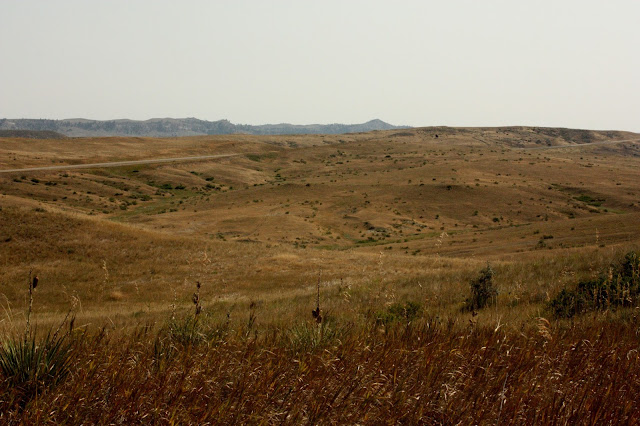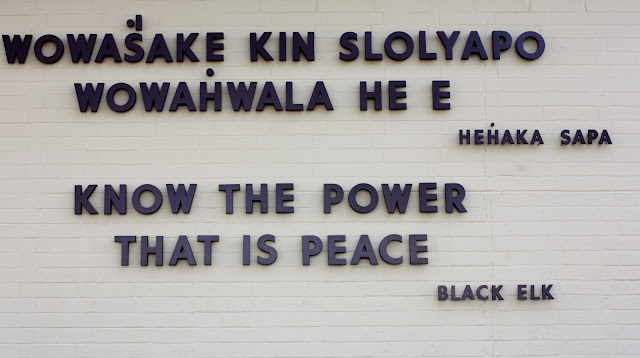The Little Bighorn Battlefield used to be called the Custer Battlefield. You've all heard of Custer's Last Stand, right? Well, the place where this last stand occurred can be visited still today. It is on the Crow Indian Reservation in Montana. Mike and I have been there many times over the years. It always seemed rather ridiculous that the place was named after Custer. First of all, he was not the only general involved in that battle and his was a story of military errors and misjudgments.
 Second, the story is of a victory for the Native Americans and the site is on their reservation. The new name is much more accurate.
Second, the story is of a victory for the Native Americans and the site is on their reservation. The new name is much more accurate.
The Little Bighorn Battle is a disturbing story, one with no lasting victories. It is referred to a clash of cultures. The basic story, according to the literature provided at the battle site, is that the U.S. Army had ordered all Native Americans onto reservations, including one in the Black Hills of South Dakota. The Native Americans lived a nomadic life and being forced to live confined must have been devastating.
When gold was discovered in the Black Hills a lot of gold miners swarmed in to get rich, ignoring the fact that they were on a someone else's land. I am sure that is just a small part of the whole story but the result was the Native American tribes worked together to fight back.
The battle that resulted at Little Bighorn was awful. It was certainly a victory for the Native Americans but they did not regain their life as it was before. They won that battle but not the war.
Standing there at the battlefield I always get a sense of despair and grief. It is a sad place. I stood there looking at all the markers where men died and wondered how much pain they felt, how long did they suffer?
Out there on the prairie there is not much coverage so Custer and his men ended up shooting their own horses to hide behind them. The misery of men and animals is still felt there, I think, because all the visitors seem to speak in hushed tones.
I hate evil. I hate conflict. I hate hate.
There is a feeling of hope there at the battlefield site I guess. There is now a lot of evidence of two cultures working together. There are now plaques honoring Native Americans as well.
Native American guides show visitors around the area, even offer tours of the Crow Reservation. There is a lot of evidence of the descendants of both cultures working together to tell the story. That's a good thing.









